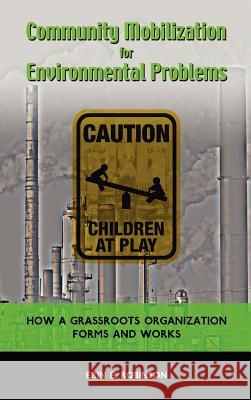Community Mobilization for Environmental Problems: How a Grassroots Organization Forms and Works » książka
Community Mobilization for Environmental Problems: How a Grassroots Organization Forms and Works
ISBN-13: 9781604978377 / Angielski / Twarda / 2012 / 278 str.
Community Mobilization for Environmental Problems: How a Grassroots Organization Forms and Works
ISBN-13: 9781604978377 / Angielski / Twarda / 2012 / 278 str.
(netto: 482,90 VAT: 5%)
Najniższa cena z 30 dni: 500,58 zł
ok. 16-18 dni roboczych.
Darmowa dostawa!
Despite the wealth of information describing social movement activity, studies that focus attention on the intricacies of community relationships within the mobilization process are few. Attention is given in this context to the community struggle to determine parameters of health and safety in the face of environmental contamination. This focused effort draws on detailed analysis of community relationships with the media, science, government and community members themselves. Over the course of five years, the author, sociologist Erin Robinson, has uncovered the ways in which community members come to understand the environmental problems they face. This book offers an explanation for how communities faced with environmental contamination can begin to make sense of that reality. The story of this community serves as a case study for how complex efforts to understand a problem facing one's community can be. In this study, the complications of social movement mobilization are analyzed from a perspective that considers the nuances of the mobilization process. In doing so, this study offers a perspective to community mobilization that reflects on processes of negotiation, conflict, acceptance, and rejection of information frames that serve to explain a community environmental problem. This book both demonstrates the ways in which individuals engage in the mobilization process and serves to explain how mobilization occurs. Through a detailed qualitative analysis of in depth interviews, document analysis, and field research, Robinson traces the beginning of a community social movement throughout the life of the movement effort. Whereas many studies of mobilization are historical, this study offers a close analysis of mobilization efforts as they were occurring. The story of how changes in mobilization occur is demonstrated by how individuals gain information from different sources and frame the issues leading to mobilization activities. Overall the book not only contributes to an understanding of why community mobilization occurs, but helps explain that as well. This is an important read for students, researchers, and community groups alike. This book provides sociological context to environmental problems that would be useful in courses and library collections in sociology, social movements, community and environmental studies.











